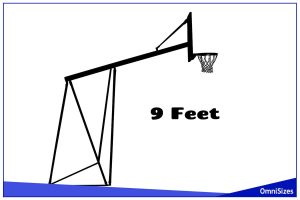Trying to figure out what 2 millimeters looks like? It’s the same as 0.0787402, but that doesn’t mean much if you don’t have a ruler on hand. The next best thing is to use common things as size references.
You can use the following 10 objects as references for measuring 2 millimeters:
- Nickel
- Grain of rice
- Pencil lead
- Matchstick
- 2 CDs
- Rubber band
- House key
- Spaghetti
- SD card
- Zip tie
1. Nickel

Did you know the humble nickel has been in circulation since 1866 and features Thomas Jefferson on its obverse? Interestingly, nickels are made of 75% copper and only 25% nickel, despite its name. This coin has seen over a century of history, so it’s not just currency, but a piece of Americana.
You can use a single nickel coin to visualize what 2 millimeters looks like. Lay it flat on a surface and take a gander and its width. The 5¢ coin measures 1.95 millimeters. You can also use a dollar coin as a reference (2 millimeters exactly), but they’re harder to come by.
2. Grain of Rice

Rice is a staple in diets worldwide and has been for over 10,000 years. Did you know there are over 120,000 varieties of rice? From the terraced fields of Bali to the sushi rolls in Tokyo, rice is as culturally rich as it is nutritious, a tiny grain.
The tininess of a single grain of rice can come in handy if you want to measure 2 millimeters without a ruler. While sizes vary between varieties, the average diameter on the widest part of the grain is 2.52 to 3.10 millimeters.
3. Pencil Lead

Pencils have been around since the mid-1500s. The main portion of this writing tool is the lead, which leaves dark marks on paper. Lead was traditionally wrapped in string or stuffed inside hollowed pieces of wood before they were integrated into a single tool. Pencil “lead” is a misnomer since it’s actually made of graphite and clay.
Don’t you hate it when the lead breaks off when you sharpen your pencil? Well, don’t toss the lead out yet—its thickness is perfect if you want to see what 2 millimeters looks like in the real world. There’s also 2-millimeter lead for mechanical pencils, but 0.5 and 0.7-millimeter thicknesses are more commonly used.
4. Matchstick

Matchsticks, the tiny fire-starters, have an interesting history. Invented in the 1800s, they revolutionized the way we use fire. The first matchsticks were dangerously combustible and often ignited unexpectedly! Today, safety matches are more reliable as a pocket-sized tools for a quick flame.
To visualize 2 millimeters, look at the diameter of a matchstick. So, next time you strike a match, you’re holding a fiery piece of history that doubles as a handy gauge for small measurements.
5. 2 CDs

CDs, or Compact Discs, were a game-changer in the music world when introduced in the 1980s. They store music digitally—a big leap from vinyl records. Did you know a CD can hold up to 79 minutes of music, thanks to a laser that reads tiny bumps on its surface?
When you’re looking to visualize 2 millimeters, think of 2 CDs stacked together. Each CD is 1.2 millimeters thick, so twice as many will get you pretty close. You can use DVDs too since they’re identical in dimensions.
6. Rubber Band

Rubber bands might seem mundane, but they have a stretchy history dating back to 1845. These bendy bands were invented by Stephen Perry and are made from natural rubber. Here’s a random fact for you: the largest rubber band ball in the world weighed 4,097 kilograms or 9,032 pounds! It’s a bouncy testament to human creativity and persistence.
In a pinch, you can use any rubber band you have on hand to measure 2 millimeters. Actually, the thickness of a rubber band is around 1.6 millimeters. The closest rubber band size to 2 millimeters is size 94.
7. House Key

Keys have played an intriguing role throughout history. They have unlocked not just doors but secrets, and ancient Romans even wore them as rings for safekeeping. The clunky keys we see in movies and on TV have gone the way of the dinosaurs, thanks to non-stop evolution of these household items.
To get 2 millimeters from a key, you need to look at your set of house keys. The thickness of a key depends on what it’s used for, with house keys measuring precisely 2 millimeters.
8. Spaghetti

The beloved Italian pasta has a lot more to offer than just a tasty meal. It’s believed that this pasta was introduced to the world in the 1st-century BC, but the actual term “spaghetti” is a recent invention (1849). Due to the dish’s popularity, spaghetti no longer sounds foreign to us, but its literal translation is “string.”
Spaghetti comes in various sizes, but traditional strands are 1.97 millimeters thick. Capellini, otherwise known as angel hair pasta, is much thinner at just around 0.92 millimeters. These figures refer to the thickness of dry pasta.
9. SD card

SD cards have come a long way since they were first introduced in 1999. SD cards, known simply as memory cards back then, were bulkier than they are now. If you thought bulky meant increased storage capacity, think again. The largest SD cards at the time could hold 2 GB, but much smaller versions were more common.
The thickness of an SD card is 2.1 millimeters. Their more modern counterparts, microSD, are just 1 millimeter. Again, physical size doesn’t represent storage capacity since microSD cards can hold massive amounts of data (1.5 TB by Micron).
10. Zip Tie

Zip ties go by a plethora of names, including zipper ties, cable ties, wire tie, and so on. While it has an abundance of names, it has one main purpose: to keep things together. If you want to organize your PC’s cables, zip ties to the rescue! Want to fasten your car’s headlamp to keep it from popping out? A zip tie can help!
Another way zip ties can assist you is by helping you measure 2 millimeters. There’s no shortage of zip tie sizes, but their widths remain somewhat the same (between 2.5 and 9 millimeters).






